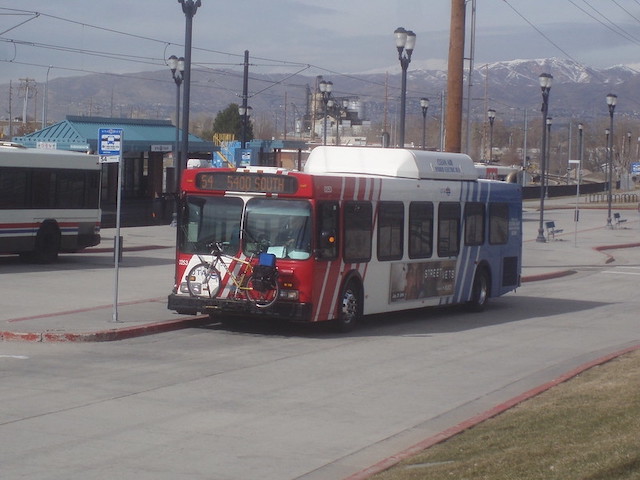Bloomberg reports that, when Utah Transit (UTA) eliminated transit fares on a trial basis in February, weekday ridership grew by 16 percent. Overall, the latest data show, average daily ridership was only 18 percent greater than it had been in January. That compares with 25 percent for the nation’s transit systems as a whole, suggesting that free transit may not have been the reason why ridership increased.
Utah Transit buses have an average of 36 seats but carried an average of just 5 passengers (that is, they carried 5.0 passenger-miles per vehicle mile) in 2019 and just 3.6 in 2020. Photo by Paul Kimo McGregor.
Considering that passenger fares brought more than $48 million into UTA’s budget in 2019, such a small boost in ridership hardly seems worth the loss of that revenue. Transit agencies, however, desperately need reasons to justify their heavily-subsidized existence. Offering free fares may boost ridership, if only by a small amount, but more important it insulates agencies from ridership fluctuations. If the agencies are solely dependent on taxpayers to keep their buses and trains running, then all they have to do is convince taxpayers or appropriators that transit is somehow vital to cities even if hardly anyone uses it. Continue reading








